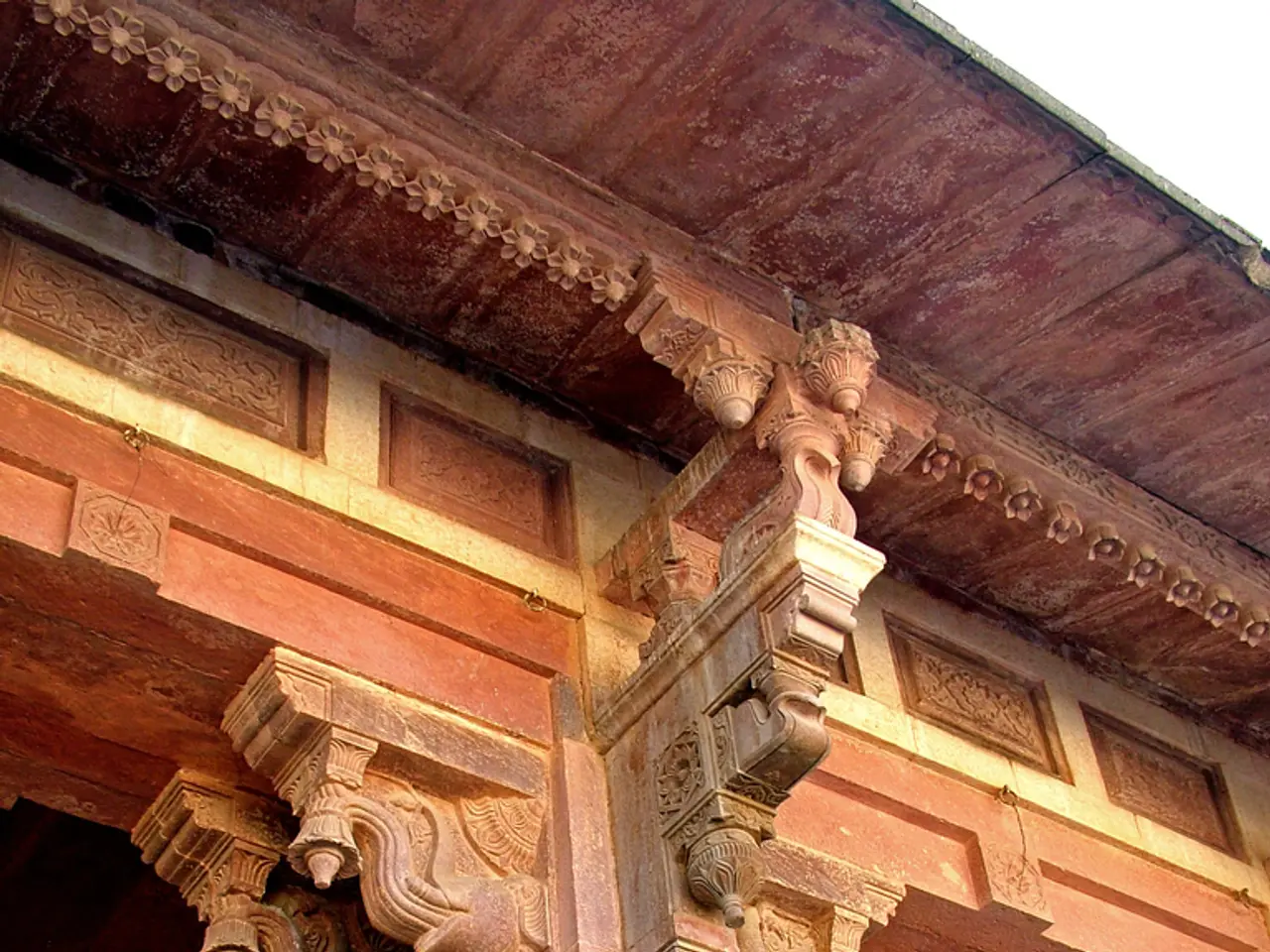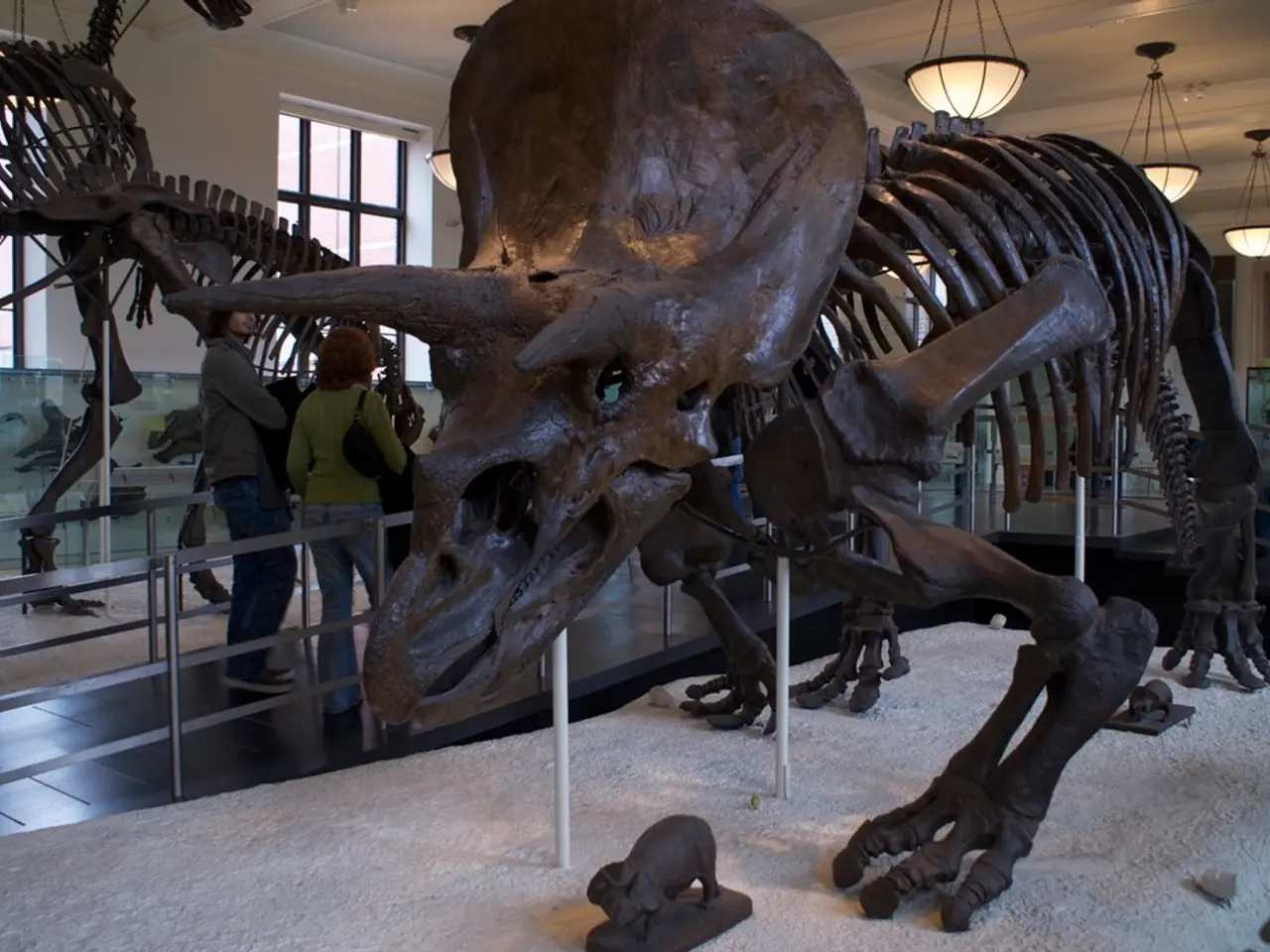Hindu Temple Unveiling in Ayodhya: Indian Premier Modi Reveals Statue on Previous Site of Babri Mosque
Newly Constructed Ram Temple in Ayodhya Sparks Controversy in India
The Ram Temple in Ayodhya, India, has been completed and opened to the public, marking the culmination of a long-standing religious and political dispute. The temple, built on the site of a 16th-century mosque that was dismantled in 1992, has been a source of controversy for decades.
Hindus believe that during the temple's inauguration ceremony, chanting mantras and performing rituals around a fire infuse sacred life into an idol or a deity's photograph. The ceremony, known as Pran Pratishtha, was attended by top film stars and cricketers but faced opposition from some Hindu seers and the majority of the political opposition.
The temple's construction is part of a comprehensive city revitalization project estimated to cost over $3 billion. The three-story temple, made from pink sandstone and anchored by black granite, spans 7.2 acres within a 70-acre complex. The Bharatiya Janata Party (BJP) might seek votes in the name of the newly constructed temple in a country where 80% of the population is Hindu.
The Supreme Court of India ruled in 2019 to allot the land for building the Ram Temple while granting Muslims alternative land to build a mosque, thus settling the legal dispute officially. However, Muslims were allocated a plot outside the city for a mosque, but construction has not yet commenced.
The Ram Temple controversy has been a focal point of religious and political controversy for decades. The dispute originated in the early 16th century during Mughal emperor Babur’s reign, when the Babri Masjid was constructed, allegedly on the birthplace of Lord Ram, a major Hindu deity. Tensions escalated in 1949 when idols of Ram were mysteriously placed inside the mosque, triggering claims and counterclaims from both communities and leading to the government locking the site as disputed territory.
The BJP has been accused of politicizing religion by some critics, with the temple's construction hailed by many Hindus as reclaiming their religious heritage but criticized by others for being a political move. Some members of the Hindu community themselves questioned the process, objecting to government involvement and architectural designs they perceived as incorporating Islamic motifs.
The controversy has influenced other religious disputes, with leaders invoking the Ayodhya model in unrelated temple entry and religious freedom issues elsewhere in India. The Ram Temple remains a potent emblem of religious identity and political power, shaping the discourse on secularism, communal relations, and history in India.
The government's move to construct the Ram Temple has been criticized for leveraging a religious celebration in a nation constitutionally defined as secular. Many opposition leaders chose to stay away from the ceremony, with opposition-ruled states announcing alternative plans for the day. The ceremony itself lasted approximately an hour, and a 51-inch (4.25-ft) statue of the deity, commissioned for the temple, was unveiled the previous week and now resides on a marble pedestal in the sanctum sanctorum.
The Ram Temple in Ayodhya stands as a testament to the complex religious and political landscape of India, reflecting the deep-rooted tensions and divisions that persist in the country. As the temple continues to be a source of controversy, its impact on India's socio-political fabric will undoubtedly continue to be felt for years to come.
The Bharatiya Janata Party (BJP), known for its Hindu nationalist approach, might capitalize on the Ram Temple controversy in political campaigns, given the majority Hindu population in India. The controversy surrounding the temple, with its roots dating back to the 16th century, has become a symbol of religious identity and a contentious topic in general-news discussions.








